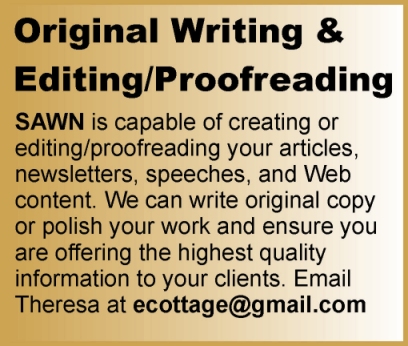
Need help writing a proposal?
Proposals are informative and persuasive forms of writing that attempt to educate the reader and convince that reader to do something. A good proposal is always readable, well-organized, grammatically correct, and understandable. Use a spell checker before submitting the proposal. Proofread carefully. In general avoid abbreviations; for example, use laboratory, not lab and mathematics, not math. The first time you use an acronym, write out what it stands for and put the acronym in parentheses. For example, the South African Writers’ Network (SAWN); after that you may use the acronym. Make sure all your references are correct. Consider using graphics to make your point stronger and clearer. A time line to show when different components of your project are to take place can be particularly effective. Include a table of contents which makes it easy for reviewers to locate important sections of your proposal. Budget information should be complete and unambiguous. Carefully review your budget to ensure that ineligible items do not appear in the budget and that adequate attention has been given to cost sharing.
Any proposal offers a plan to fill a need, and your reader will evaluate your plan according to how well your written presentation answers questions about what WHAT you are proposing, HOW you plan to do it, WHEN you plan to do it and HOW MUCH it is going to cost.
Any questions that the reader might pose should be anticipated and answered in a way that reflects the stated position of your proposal. It is important that the writer also considers all sides of the argument — providing other alternative solutions to the problem, but showing how the one chosen is superior to the others included. The goal of the writer is not only to persuade the reader to do what is being requested, but also to make the reader believe that the solution is practical and appropriate. In persuasive proposal writing, the case is built by the demonstration of logic and reason in the approach taken in the solution. Facts must lead logically and inevitably to the conclusion and/or the solution presented. Evidence should be given in a descending order of importance, beginning with the most important evidence and ending with the least important.
The writer must also determine beforehand the level of knowledge the audience possesses and take the positions of all the readers into account; for instance, its important to know whether the readers are members of the technical community or technical discourse community, or of both, which will enable the writer to use the appropriate materials and language to appeal to sectors. It is a good idea to include an executive summary that is written in non-technical (easily accessible) language, or even a glossary of terms that explains technical language used in the body of the proposal.
The most basic composition of a proposal, as with any other written document, is simple; it needs a beginning (the Introduction), a middle (the Body of material to be presented) and an end (the Conclusion/Recommendation).
- The INTRODUCTION presents and summarizes the problem you intend to solve and your solution to that problem, including the benefits the reader/group will receive from the solution and the cost of that solution.
- The BODY of the proposal should explain the complete details of the solution: how the job will be done, broken into separate tasks; what method will be used to do it, including the equipment, material, and personnel that would be required; when the work will begin; and, when the job will be completed. It should also present a detailed cost breakdown for the entire job.
- The CONCLUSION should emphasize the benefits that the reader will realize from your solution to the problem and should urge the reader to action. It should be encouraging, confident and assertive in tone. Look again at the goals and objectives and at your written plans and procedures for achieving the goals. Check to see that the goals are well-developed and realistic and that your plans are innovative and appropriate.
Contact Theresa [ecottage@gmail.com] for proposal writing.





 I’m a published author of four business books and have written a number of self-study tutorials [creative writing; editing and proofreading; business writing; and self-publishing] and an eBook [Workplace Harmony]. I am an experienced writer, editor and publisher.
I’m a published author of four business books and have written a number of self-study tutorials [creative writing; editing and proofreading; business writing; and self-publishing] and an eBook [Workplace Harmony]. I am an experienced writer, editor and publisher. 




